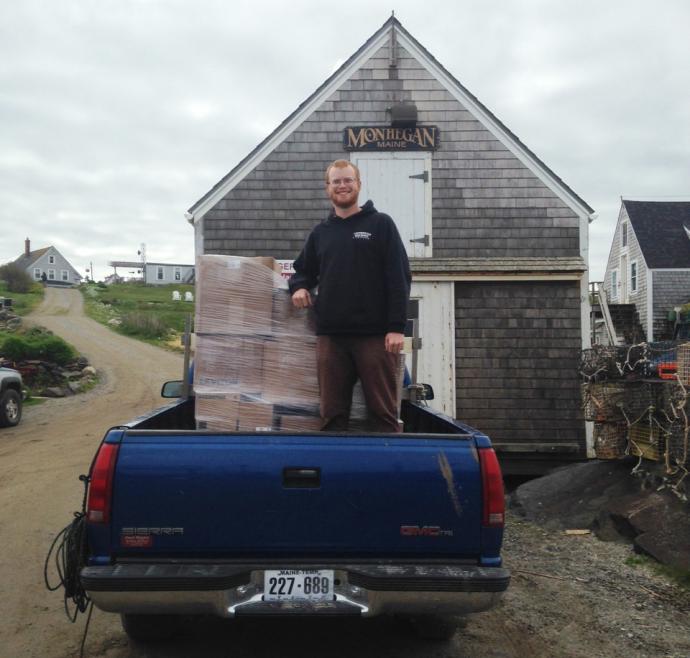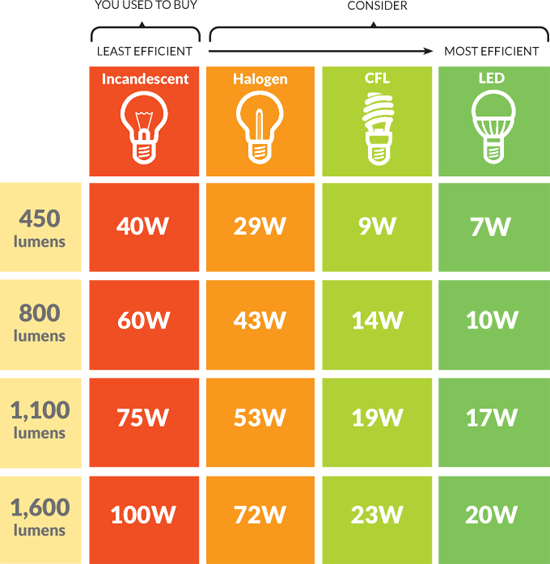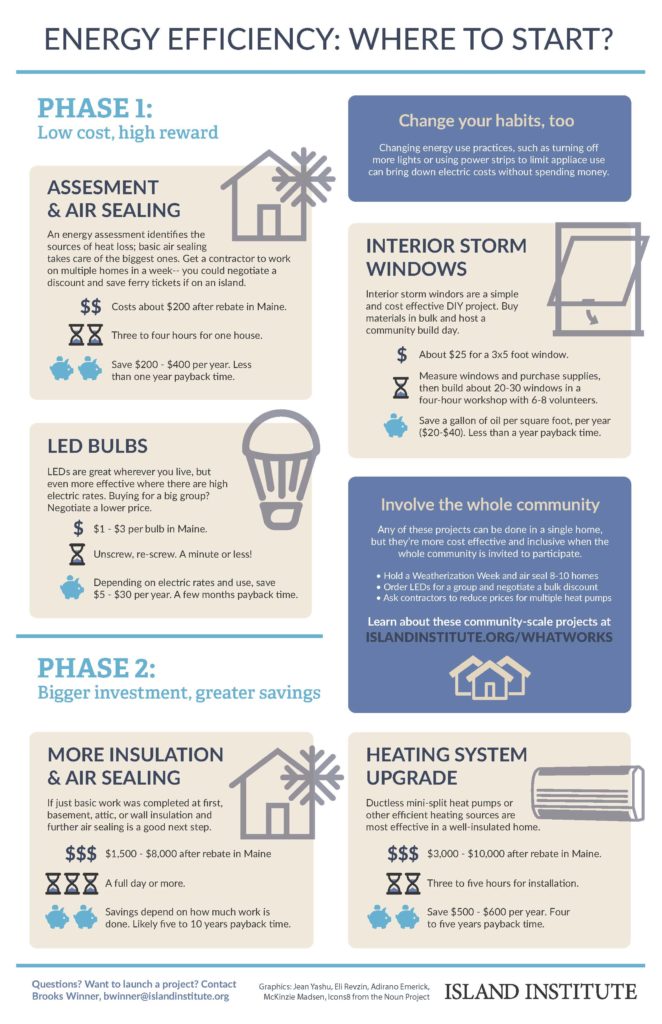Residents of Monhegan rely on diesel generators to produce electricity for their island. As a result, ratepayers on the island pay some of the highest electricity rates in the nation, at $0.70/kWh. Residents asked an Island Institute Fellow, Ben Algeo, to help them analyze and reduce their energy consumption. Ben followed the same process on Matinicus a few months later.
HOW IT WORKS
Ben analyzed the energy use from electric lights on the island and then organized a bulk purchase of energy efficient LED bulbs. The LEDs, which consume a fraction of the energy of traditional incandescent bulbs, reduced energy usage for homeowners. Most LED bulbs are already marked down significantly through an Efficiency Maine program to $3-$5 at retail. Because the bulbs for Monhegan were purchased in bulk—and because the project was supplemented with funding from a grant—the LEDs were just $1 each. This saved Monhegan homeowners an average of $7 per bulb in annual electric costs (more if replacing incandescents, less for CFLs) on this simple, DIY energy upgrade.
IMPLEMENTATION STEPS
- Going house-by-house, count the number of existing bulbs to set an inventory of current electricity use.
- With that baseline in hand, contact a wholesaler of light bulbs and ask for a bulk purchasing discount and options for specific bulbs. You will need to settle on a few wattage options in order to qualify for a bulk discount.
- Hold an information session for interested homeowners. At the meeting, distribute catalogs and order forms (scroll down for samples from Matinicus and Peaks) so that homeowners can make bulb selections.
- Collect the order forms and place the order.
Q & A WITH BEN ALGEO, DIESEL ISLAND FELLOW

Can you tell me a little bit about LEDs?
LED lighting is an emerging technology that’s much more efficient than older incandescents, so the opportunities for cost savings on electricity bills are huge. Because it’s an emerging technology the price is coming down rapidly. The color rendering is continuously getting better.
How did this work get started?
The idea for a group purchase came out of an exchange trip that a couple of islanders took before I was an Island Fellow. They visited Naushon Island near Cape Cod where a lot of work has been done over the past ten years or so to bring down diesel consumption. They started out swapping out the lighting with compact fluorescent, then larger appliances like refrigerators, then did a bunch of work to upgrade their grid and make it more efficient, and finally added renewable generation: solar. They brought down their diesel consumption by around 75% over ten years. The Maine islanders were looking for ways to replicate that on an island that’s not privately owned, because on Nashon they can just go into houses and switch things out. In a community, you can’t just go into people’s houses and rip out their light bulbs, so I surveyed appliances in houses, and found the common needs for energy efficiency improvements. One of the biggest needs was lighting.
How did you go about it?
We did a quick information session and explained the savings. Switching out one 60-watt bulb for an 11-watt replacement could save someone $30 a year. We gave people about two weeks to sign up, and got orders from 40 people (about half year-round residents and half seasonal).
Is this replicable on other islands and in other rural communities?
I think so. The bulk discount is appealing, and sharing shipping and disposal costs are a big deal. It’s not fun to get rid of things on an island, so it helps to have one person handle all that.
CHALLENGES
- Color temperature. As bulbs improve this is becoming less pronounced, but some homeowners may prefer the warm color temperature of incandescent bulbs.
- Aggregating payments. It is challenging to collect payments from multiple people. Some potential solutions include online payment services like Venmo or Square Cash, or simple cash and check collection.
- Seasonality. It’s better to hold information sessions during peak seasons, when more ratepayers are present, but meetings may be more difficult to schedule because of other events during that season.
- One solution is to have more meetings at different times of day during the peak season.
OUTCOMES / RESULTS
- Monhegan residents purchased 2,300 bulbs are projected to save $15,000 per year due to decreased electric demand. That savings results in large part from diesel fuel that is not needed to generate electricity.
- An additional benefit is that the load required for future generation (for example, a renewable system like solar) is diminished, meaning that system may be more affordable.

ADDITIONAL RESOURCES
- Lighting fact sheet from Island Institute
- Sample LED order forms from MatinicusS LED and Peaks
- Energy Efficiency factsheet:

Originally Published March 2016

